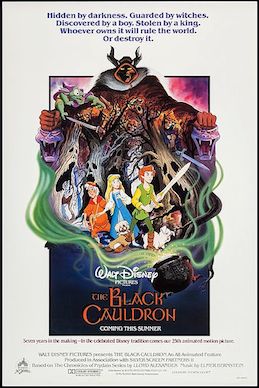
All good things must come to an end. After the powerhouse five-film run of The Little Mermaid, The Rescuers Down Under, Beauty and the Beast, Aladdin and The Lion King, Disney broke their hitting streak with Pocahontas, which, while not exactly a bad film, fails to live up to the heights set by its predecessors (though anything was likely to be a letdown after the triumph of The Lion King).
Artistically, the animation loses something from the lifelike fluidity of The Lion King, though that may be due to the switch from graceful animals back to a human cast. The voice acting is decent, although having Mel Gibson voice the English John Smith causes him to stick out sorely when he's the only colonist with an American accent. Musically, the film is nothing to write home about either; while some of the Native-inspired score pieces set the atmosphere well, most of the songs are forgettable, with "Colors of the Wind" being the only one most people are likely to remember, although its sequence within the film is frankly ridiculous when you step back and look at it. Indeed, the best song in the film might be the end-credits number "If I Never Knew You," which wouldn't sound out of place in an American Idol finale.
The film's real problems, however, run a bit deeper. The term "Disneyfication" has long been applied to Disney's tendency to clean up the source material its films are based on to make them appeal to a family audience and fit the traditional formula of a rapidly blossoming romance with plenty of musical numbers. In many cases, the resulting films are of enough quality that this can be forgiven or overlooked. What is harder to excuse, however, is Disneyfying actual history, especially history with as bloody of a legacy as American colonization. In the film, we're given an 18-year-old Pocahontas who falls in love with John Smith, saves his life, and brings the Natives and English to mutually respect each other. In reality, the incident in question occurred when Pocahontas was a child, if it actually happened at all. The film also tries to paint the conflict between the Natives and English as a misunderstanding fueled by prejudice on both sides, grossly oversimplifying the roots of colonialism. While the idea of peoples in conflict being brought together by a love affair could certainly be a compelling one, applying it historical events that ultimately led to the destruction of one side in favor of the other is tone-deaf at best and culturally damaging at worst. While Pocahontas is nowhere near the worst film in Disney's canon, its sins are certainly unique.









